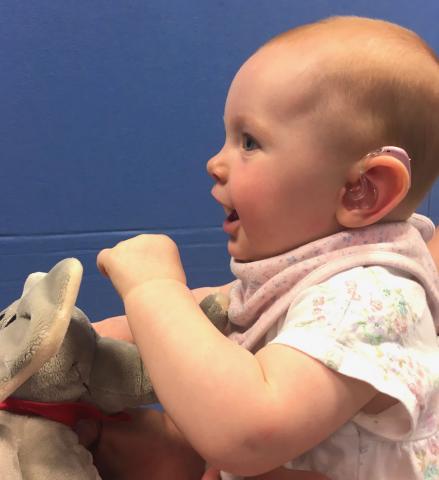Hearing Aids

In some cases a child with Glue Ear may benefit from a low-powered hearing aid. Hearing aids can be worn for many months while waiting for Glue Ear to clear itself and may be preferable to surgical treatment.
![]()

Nice guideline NG233 (2023) states:
- 1.4.1 Consider air conduction hearing aids or bone conduction devices for children with OME-related hearing loss.
- 1.4.2 Consider air conduction hearing aids for children with OME-related hearing loss when: their hearing loss is not fluctuatingand this type of device would be better tolerated or is preferred, for example by avoiding the need for a headband as is used with bone conduction devices. [2023]
- 1.4.3 Consider bone conduction devices for children with OME-related hearing loss when: their hearing levels are known to fluctuate, or there are contraindications to using an air conduction hearing aid (such as a history of otorrhea, or anatomical issues such as narrow ear canals), and this type of device would be better tolerated or is preferred (for example, to avoid the choking risk from the small parts of an air conduction device). [2023]
Post aural hearing aid
Once a decision has been made to issue a post aural hearing aid, an impression of the concha (outer ear) will be taken for an ear mould to be made. To get the best performance from a hearing aid it is vital that the earmould fits well. As a child’s ears grow, the earmould will become too small and new impressions will need to be taken for replacement ear moulds.
Further information about supporting daily hearing aid use can be found here.
Bone conduction aid
A bone conduction hearing aid works by vibrating bone on the child’s head to send the signal straight to the inner ear. The sound does not pass through the middle ear as is the case with a conventional hearing aid. The transducer, which vibrates, can be on a hard or soft band. There are many different makes and models of all hearing aids and audiologists are skilled at recommending the most appropriate aid. This leaflet provides more information about one model of bone conduction aid and instructions for use.
Another type of bone conduction aid involves surgery to implant an abutment which the external part of the aid connects to. Due to the fact that Glue Ear is temporary, this would not be used for the treatment of Glue Ear.
The NDCS produces a book ‘Hearing Aids: Information for families’.
References
NDCS (2020) ‘Hearing Aids: Information for families’. [Online] [Accessed: 9 Sept. 2023].
National Institute for Health and Care Excellence (2023) ‘Otitis media with effusion in under 12s.’ [Accessed: 09 September 2023].


